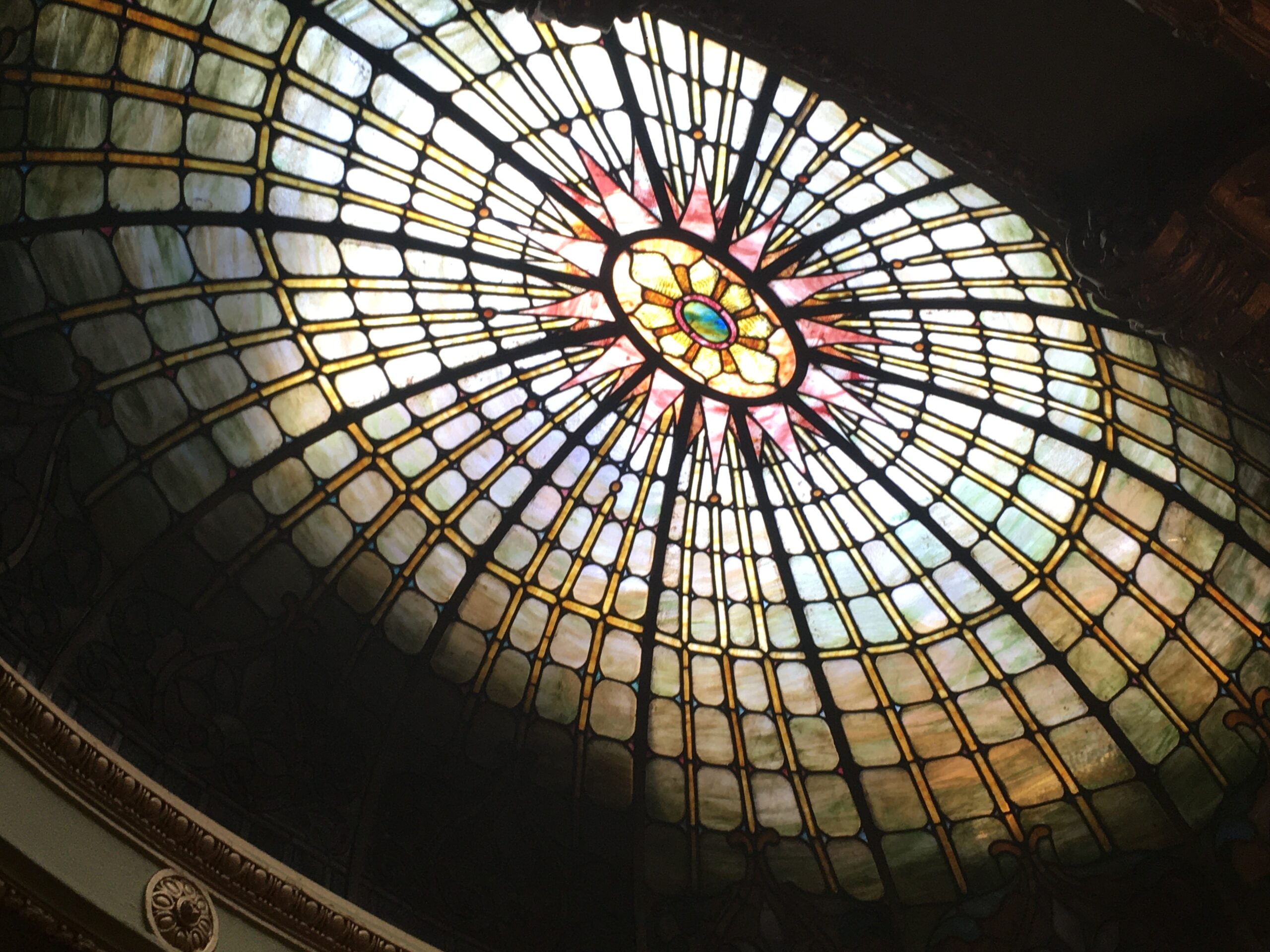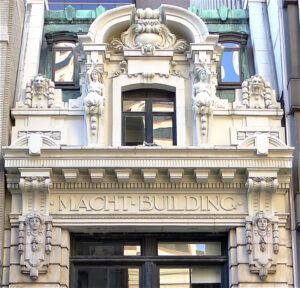A billet-doux to 1739 Eutaw Place~
Your door has been open to me four times.
The first time I was walking by one sunny afternoon and spotted a large, round, stained-glass panel on the landing between your second and third floors. Your front door was ajar. In the vestibule was an old brass panel with half-a-dozen buzzers. I pushed a few and waited. Just as I was about to give up, an older gentleman came down the stairs and opened the inner door. I explained that I wanted to photograph the round stained-glass window from inside the house. “What is stained glass?” he asked in an Eastern European accent. I pointed up, and he let me pass. The large round panel on the landing left me gaping in astonishment. In opalescent glass, a fence, roses and an arbor in the foreground, a castle on a cliff in the middle, mountains and blue sky in the background took my breath away. It was unsigned and undated; its provenance was a mystery. Research at the Commission for Historic and Architectural Preservation provided a few clues. You were built for the Brager department-store family in 1904-05. The stained-glass windows seem original to the building.
I spoke to your current owner on the phone. “Did you see the dome?” she said. “What dome?” I asked. She told me to go back again. The second time another tenant let me in. I went up the stairs, looked up and gasped. A huge oval stained-glass dome enveloped me in a spidery design. Caught in its web, I lay on the landing floor to photograph it but couldn’t capture on my I-phone camera the intensity of the feeling it evoked. The tenant showed me a small, jewel-like window in her apartment that she had the privilege of looking at every day. The third time I took a photographer with me to take better pictures of the panel and the dome. He caught the dome’s elaborate border of stylized leaves and flowers. He also photographed me looking up, dwarfed by the enormous decorations. It was his favorite picture of the place, he said.
I took a friend with me the fourth time. Yet another tenant let us in. The third-floor front apartment was vacant, its door open. In the tiny kitchen we found a beautiful stained-glass window whose abstract design allowed the inflow of golden afternoon light.
How beautiful you are, 1739! What pure delight you give me! Je t’aime.
~Linda Rabben
Linda Rabben is the author of Through a Glass Darkly: The Social History of Stained Glass in Baltimore and an associate research professor of anthropology at the University of Maryland.



